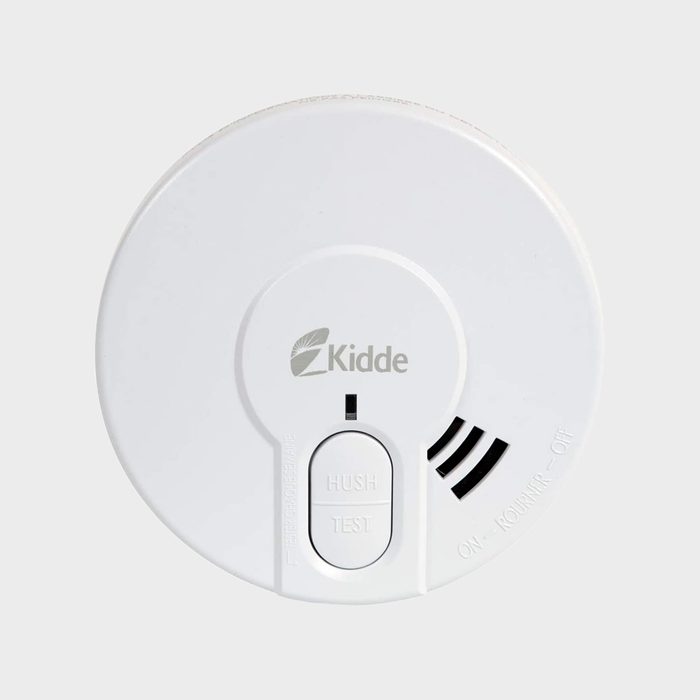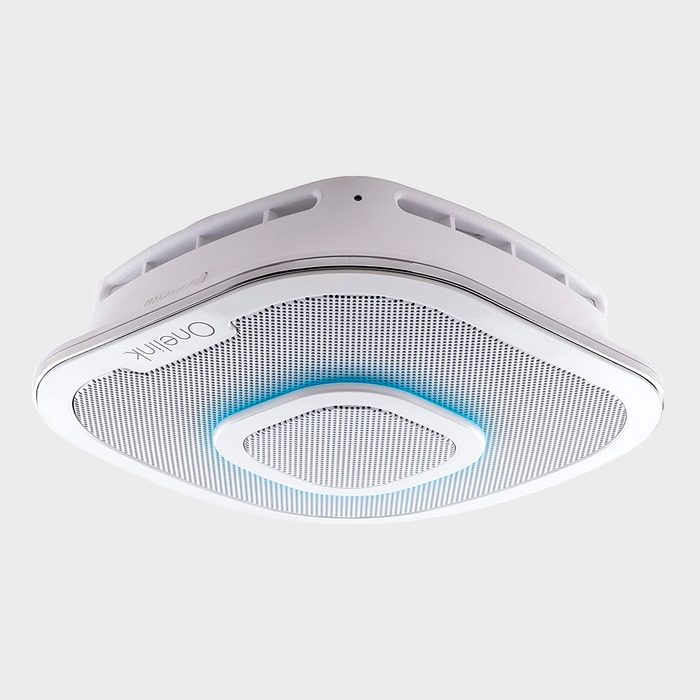Finding the best smoke detector for your home is one of the smartest and safest decisions you can make.
Our editors and experts handpick every product we feature. We may earn a commission from your purchases.Learn more.
Finding the best smoke detector for your home is one of the smartest and safest decisions you can make.
Our editors and experts handpick every product we feature. We may earn a commission from your purchases.Learn more.

Pros:
Cons:
There are a lot of reasons to love the Google Nest Protect. It check all the boxes Dawson recommended and comes with a slew of extra features.
The Google Nest Protect can alert you to smoky fires and flames, thanks to its dual photoelectric and ionization systems. It also sends a voice alert to let you know exactly what kind of emergency is going on.
Google also offers wireless and hardwired options, so you can easily choose what type of installation works best for your home. The Google Nest Protect comes in solo and multi-packs.

Pros:
Cons:
The X-Sense smoke and carbon monoxide detector combines the safety of two important devices into one. Further, an easy to read display offers vital information about your home’s current environment. It’s a smart way to pick up on issues before things get out of hand. The 10-year lifespan of its sealed lithium battery is a big plus.

Pros:
Cons:
The Kidde FireX detector also blends carbon monoxide and smoke detection into one. It doesn’t offer smart features like the Google Nest Protect. But it does come with voice alarms and connects to other FireX detectors throughout your home.
Though hardwired, it comes with a backup battery to ensure you still have protection even if the power goes out. It’s also extremely affordable.

Pros:
Cons:
Another smart detector similar to the Google’s Nest Protect is the Onelink Smart Smoke + Carbon Monoxide Detector. It comes with wired and battery options and can easily be connected with Apple’s Homekit and Amazon’s Alexa assistant for smart features.
It tells you which room the danger is coming from, helpful in a larger home. Because it connects to Apple and Amazon assistants, you can keep a constant check on the status of your alarms and home.
First, there are multiple types of smoke detectors available. You can purchase hardwired smoke detectors, battery-powered ones, and even models that plug into a wall outlet.
While installing battery-powered or plug-in smoke detectors might be easier, Mark Dawson, chief operating officer of Mister Sparky recommends hardwired ones. “They rely on the battery only for power outages, which can help in case of an emergency,” he says. Further, he says plug-in options could be compromised if gas rises from the floor. This guide on how to replace a hardwired smoke detector might come in handy.
Also consider various features. Dawson says there are two types of detectors, ionization and photoelectric. Ionization detectors sense actual flames, while photoelectric detectors are more sensitive, going off if a fire is just smoldering.
Dawson recommends placing photoelectric detectors in the kitchen or living room and ionization detectors in bedrooms. You can also make use of dual sensor models, which detect smoke and open flames.
Dawson also recommends battery backup, as well as smart technology. Smart smoke detectors allow you to monitor your house through an app even when you’re not there, ensuring your family is always safe and secure.
When selecting the best smoke detectors, we considered connectivity benefits, types of detection systems and other basic features.
Hardwired smoke detectors. You don’t have to worry about replacing the batteries constantly.
It doesn’t matter, though one unit that handles both tasks gives you fewer devices to keep track of.
Smoke detectors should be placed close to the ceiling in every room, and in hallways outside of bedrooms.